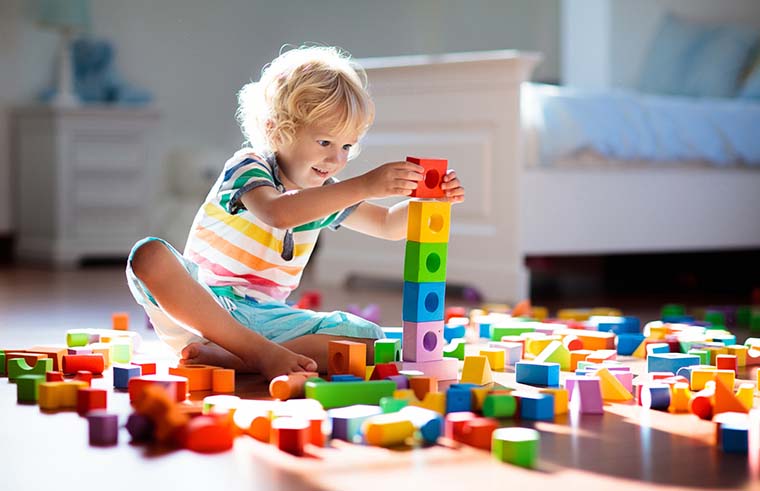
Have you ever found yourself absentmindedly doodling or humming? Maybe tapping your toe to a faint melody or mentally rearranging the store layout while shopping? Perhaps envisioning a room with a new colour scheme, crafting rhymes in your mind, solving puzzles during a speech, or dancing freely in the aisles while shopping for pasta sauce? How about fidgeting to stay focused or constantly adjusting your position?

Whether preoccupied, restless, or deeply engrossed, numerous individuals engage in doodling on the corners of their schedule, in the white spaces of their notebook, or across a blank page. These idle scribbles are usually done by children from preschool age such as preschools in Trivandrum and kindergartens near me. Adults often do that due to often lack of purpose or symbolism (though certain psychologists may decipher them for underlying implications), and spectators generally do not criticize them. They are typically regarded as a way of… what exactly? Passing time during moments of boredom? Finding solace? Concentrating better? Expressing oneself?
If you are a student or parent of a preschooler studying in kids playschool and playschools Trivandrum enjoy doodling with pen and paper, you may be surprised to learn that not everyone doodles in the same way. Some people mentally doodle by working out math problems they create or visualise a box unfolding to see where the print and design would be on each surface. Others prefer to move, sing, cook or bake while others doodle in multiple mediums. These different methods can be a form of creative expression or a way of satisfying the need for creative expression from preschool age of kids studying in icse schools in Trivandrum and best preschool in Trivandrum. We all have a way in which we “doodle” and usually use it daily!
Doodling occurs when the mind is in a relaxed state, allowing for creative expression. It engages various senses such as auditory, kinesthetic, tactile, and visual, providing a more immersive experience. Each sense activates different motor and neural pathways, enhancing processing, memory, creativity, and motivation. Studies suggest that doodling since childhood for children in preschools such as international schools in Kerala can reduce stress and enhance problem-solving skills. Overall, doodling can be a valuable tool for learning.
If you interact with younger children, you may not have seen them doodling yet (which is often the first step in writing as it holds meaning for the author). However, you may have observed them engaging in spontaneous activities such as dancing, singing, dressing up in various outfits, painting in a freeform manner, or playing around with rhyming words or silly sounds. It is important to encourage and support children of all ages including preschoolers in best play school and best preschool Trivandrum, genders, and perceived abilities to freely explore their creative outlets, including doodling.
Educators need to lead by example and encourage creativity in children, even if they do not consider themselves to be traditionally “creative.” By expanding our definitions of creativity and talent, we can help every child feel valued and capable of expressing themselves creatively. We must challenge our own beliefs about creativity to inspire creative thinking in the classroom for kids such as at kids school in Trivandrum from the time of preschool admission.
Studies have validated that engagement in creative arts leads to significant changes in the body, brain, and behaviour as it involves the use of both sides of the brain. This interdisciplinary approach has the potential to enhance both physical and mental well-being, ultimately promoting positive social and emotional connections as well as a feeling of inclusion for kids too studying at international playschool Kerala and best kindergarten in Trivandrum.
Encouraging creativity through the act of doodling
Every educator possesses the tools and skills to cultivate creativity within the classroom through a range of methods. How can teachers promote creativity in their classrooms? How can they stimulate diverse forms of doodling?
This is an excellent opportunity for adult volunteers to participate in donating various items and helping children studying at preschool near me and kindergartens Trivandrum. You can choose to keep the centre open regularly bring out the supplies for a week at a time (allowing enough time for exploration before creating), or even designate one day each week for this purpose. This flexibility allows you to customize the schedule to best suit your availability and support requirements.
Freeze in Motion: With upbeat music playing, encourage the children as suggested by tutors from montessori training and montessori teacher training to move about the room using various movements like walking, hopping on one foot, or frog hopping. When the music suddenly stops, challenge them to freeze in place like an “ice sculpture” of their design, striking a creative pose.

Try out some unique music for your students such as Native American songscapes, classical melodies, sea shanties, and reggae tunes. You can easily find a variety of unexpected genres with a quick online search. Focus on the tempo and mood of the music, aiming for a moderate to upbeat vibe. Don’t worry too much about the lyrics, as the main goal is to introduce your students by tutors from preschool teacher training and teacher training in Trivandrum to new and interesting sounds.
Each child is given two markers, one for each hand, to draw freely on a 12” x 18” piece of paper while listening to music for 1-2 minutes. After the music stops, children partner up to discuss and identify any recognizable shapes or objects in each other’s designs, similar to finding shapes in clouds. Optionally, they can outline or colour these objects, but the emphasis is on the free-form drawing rather than creating a finished product.
Encourage children to work in pairs to come up with their own special “high five” greeting. Some educators suggest introducing this activity at the start of the school year, allowing students by tutors trained from ttc in Kerala and ttc in Trivandrum to greet each other with their personalized gestures each day.
In the Monkey-See Monkey-Do Conga Line activity, children form a line with their hands by their sides. A fun and lively song is played, chosen either by the class or the teacher at preschools in Trivandrum and kindergartens near me. The leader in the front selects a specific movement or pose for the entire line to mimic as they dance around the room in a conga line. When the music pauses, the line stops moving while the leader moves to the back of the line, making way for a new leader to take their place. The new leader then demonstrates a new movement for the rest of the line to imitate. This cycle is repeated throughout the activity.

Tiny Theater: Set up a creative space with costumes, character headbands, paper, and pencils for children to use in a designated theatre area. If available, long wooden blocks can be used to create a stage. Encourage children at kids playschool and playschools Trivandrum to write, dictate, or create their own stories and act them out. They can also design their own costumes, props, and tickets. Leave the materials out for at least a week to allow for stories and costumes to evolve.
Having regular chances to engage in creative, multisensory activities can stimulate the brain to release dopamine, serotonin, and endorphins, which contribute to feelings of pleasure, relaxation, and motivation. This can potentially counter the rising rates of poor mental health among youth and enhance academic learning including kids studying at preschools in best preschool in Trivandrum. How valuable would it be to incorporate more creativity into your classroom?
No matter your doodling style or level of creativity, your mental and physical health needs to continue doodling. Be a role model for your children by embracing your creativity and encouraging them to do the same.
Were last-minute revisions being made? Were additional questions requiring answers included? No, she was simply doodling. This was widely reported in newspapers worldwide, portrayed as proof of her perceived lack of focus and commitment during the crucial and intricate gathering.
However, don’t assume that she wasn’t paying attention just because she was doodling. In reality, doodling can enhance listening and cognitive processes for kids studying in international schools in Kerala and the best play school as well who are naturally creative by nature. Several studies have shown the surprising benefits of doodling, such as improving creativity, productivity, focus, and mood.
This article will explore the science behind doodling and its numerous brain benefits, providing you with everything you need to know on the topic.
What impact does doodling have on the brain?
So, what is happening in our brains when we doodle? Typically, doodling occurs as a result of boredom, frustration, or the need to alleviate stress even for young kids studying at best preschool Trivandrum from the time of preschool admission. Experts explain that doodling serves as a safety mechanism, enabling us to release built-up tension in a harmless and calming manner.

What exactly happens in our minds when we doodle? Typically, doodling occurs when we are feeling bored, frustrated, or in need of stress relief. According to experts, doodling can be seen as a way to release built-up tension in a safe and non-confrontational manner for kids studying at kids school in Trivandrum and international playschool Kerala.
There are many benefits to doodling, including increased creativity, productivity, and focus.
Daydreaming is prevented by doodling, which keeps the brain from entering its default mode.
Your brain exists in a delicate balance between being alert and being idle. Ideally, there should be enough stimuli to engage your brain and activate your attention circuit as practiced in best kindergarten in Trivandrum and preschool near me. When we focus, different parts of the brain work together to ensure our eyes are directed towards a specific target and process visual information effectively. However, what happens when we are not focusing our attention?
When the mind is not actively engaged in a task, recent studies indicate that it enters a default mode characterized by specific circuits that allow it to remain on standby for the next activity without expending excessive energy. This default state involves regions of the cortex like the medial temporal lobe, responsible for memory as suggested by tutors trained from montessori training and montessori teacher training, and the posterior cingulate cortex, a well-connected brain region that processes information from various sources.
The default mode network is activated when engaging in daydreaming or recalling memories. However, there are times when you need your brain to be alert and attentive to the external environment such as in kindergartens Trivandrum taught by teachers trained from preschool teacher training instead of daydreaming. Doodling can be helpful in this situation, as it prevents your brain from entering a state of disengagement and instead keeps it on standby mode.
Doodling enhances your memory.
One of the most extensive research projects on doodling was conducted by Jackie Andrade at the University of Plymouth in the UK. Participants were instructed to listen to a dull telephone message and later recall the information. Some of the participants were also asked to casually shade in squares and circles during the message, without worrying about neatness or staying within the lines. The study revealed that those who doodled were significantly better at recalling the information later on.
What is the reason behind the doodlers being better at recollection compared to non-doodlers? One possible explanation is that doodling prevented the individuals from entering a default state of mind and becoming easily distracted. It helped maintain an optimal level of alertness where they could focus on the information while also engaging in drawing. The participants were unaware of the upcoming memory test and were simply asked to jot down some names, with these notes later being removed before testing. This lack of prior knowledge may have contributed to non-doodlers being more prone to drifting off into daydreams.
Engaging in doodling enhances creative thinking
Doodling is not just a method to prevent daydreaming or keep your mind awake; it is a creative activity that can inspire solutions to any challenges you are facing.
For example, innovative ideas can arise from doodling. When he was bored during a monotonous meeting in 1963, Stanisław Ulam, a mathematician from Poland, began sketching a square spiral of numbers on his notepad. As he mindlessly highlighted the prime numbers within the spiral, he noticed a trend – the primes appeared along the diagonal lines. Ulam had stumbled upon a previously unknown mathematical pattern related to prime numbers, all through the act of doodling.
Doodling can also assist in developing and perfecting ideas that have already been formulated. Authors, it appears, are often found doodling for this purpose. For example, Alexander Pushkin would sketch the faces and characters from his poems on the margins of his manuscripts, potentially bringing them to life in his mind.
Doodling can enhance your ability to learn.
Drawing during lectures and assignments has enhanced information retention and comprehension of complex concepts. Studies suggest that it also boosts the enjoyment of learning, leading to increased engagement with course materials, decreased distractions, and improved creative thinking. These cumulative benefits can help you excel as a student, whether in academic settings, the workplace, or everyday life.
Doodling has the potential to enhance overall thinking patterns and promote a broader perspective.
Have you ever heard of the saying “can’t see the forest for the trees”? Doodling can help to give us a wider perspective and see the whole forest. In times when we as well as teachers trained from teacher training in Trivandrum and ttc in Kerala are solely focused on a specific problem or task, we may overlook the bigger picture. Doodling helps us to take a step back and make connections between larger ideas and concepts, drawing from our memories and subconscious. This type of brainstorming can lead to creative and innovative solutions.
A prime illustration of this concept is seen in Gabriela Goldschmidt’s research, where she observed how a student struggling to design a kindergarten found inspiration from his own doodles. Despite initially struggling to generate ideas, the student began doodling his signature out of boredom. To his surprise, he noticed patterns between the letters that sparked ideas for various play areas in the kindergarten. By expanding upon this doodle, he ultimately developed a successful design.
Doodling can aid in self-awareness.
Similar to dreams, many individuals view doodles as a window into our subconscious minds. They are believed to reflect our hidden beliefs, memories, and thoughts that are not always at the forefront of our awareness. Researchers suggest that our unconscious scribbles provide clues about our underlying emotions and can help us and kids studying in icse schools in Trivandrum taught by teachers from ttc in Trivandrum better understand ourselves. Doodling is seen as a way to uncover our true selves by peeling back the layers of our ego. For instance, boxes may represent organization and productivity, while flowers may hint at a delicate and sensitive personality.

